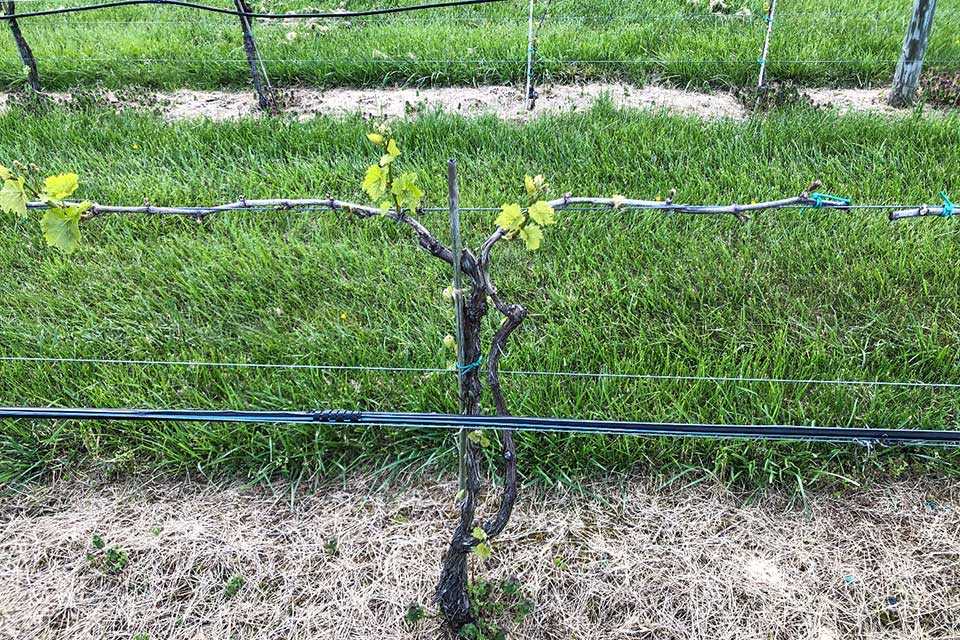Virginia Grape Growers Look To Regroup After Tough 2020

Weather was a big factor during the past year for Virginia grape growers. Pictured here is an example of that: Few remaining shoots on ’Chardonel’ vine hit by two frosts.
Photo by Tremain Hatch
Virginia grape growers had a hard time with frosts last spring. Cold weather was, of course, a big part of the problem. But it was a warm March that set us up for trouble.
There were plenty of unfortunate circumstances we found ourselves in during 2020. For Virginia grape growers, spring frost was a particularly unpleasant memory from this vintage. There were frequent and widespread frost episodes in April and May. In fact, April and May of 2020 were cooler than the previous year. We had frost episodes on April 15, 17, and 19 and May 9, 10, and 13.
Some of these episodes were particularly widespread, like the episode on Mother’s Day morning (May 10), which affected a large portion of central and eastern Virginia. There were some unfortunate growers who sustained frost injury to primary buds in mid-April, then suffered frost injury again on secondary buds in May. There is not much fruit production potential on the tertiary buds.
Unfortunately, we have seen frost before. Most Virginia vineyards have had to deal with a spring frost at one time or another. Most of our frost episodes are radiational cooling events — still air and clear skies — so locating a vineyard on land with a higher elevation relative to the land surrounding it is an important consideration for site selection. We still saw that effect this year: Sites with higher elevation than surrounding land fared better. Some operations put up a valiant fight by using wind machines, and some even used fires and mobile heaters in the vineyard with varying success.
However, what made this episode unique was how early we sustained frost injury in April. We had a warm and mild late winter, combined with a very warm March. So, our vines started shoot growth earlier last spring than normal. Unfortunately, once that shoot growth had started, April and May were very cool months. Grapevines don’t have tremendously high chilling-hour requirements, so warm temperatures in March were sufficient to hasten the end of ecodormancy and development of green tissue that was then sensitive to spring frosts.
This gets us back to our Goldilocks-like requests for winter temperature — not too cold as to avoid winter injury but cold enough and long enough that we minimize some of the spring frost risk. Is that too much to ask?










